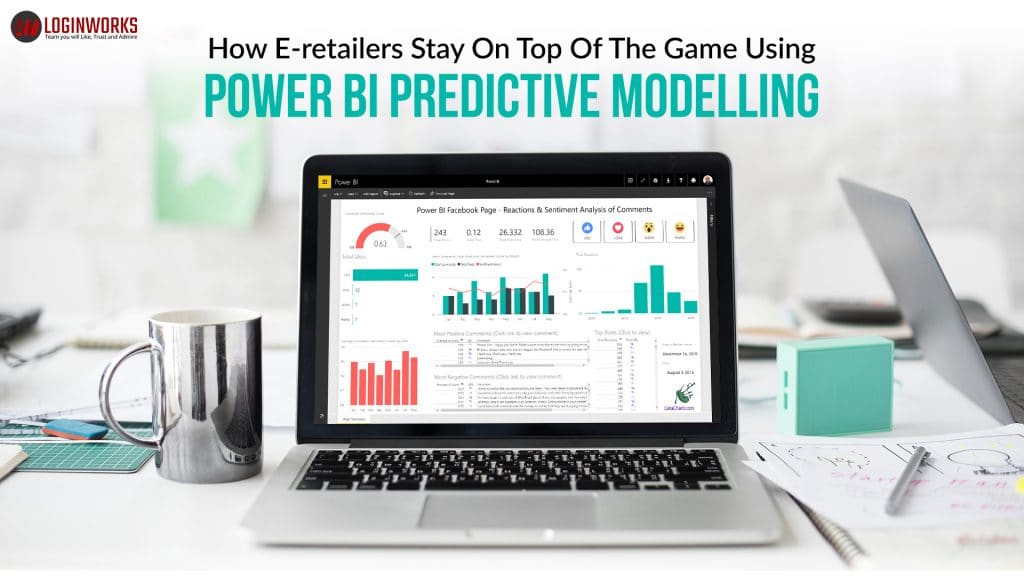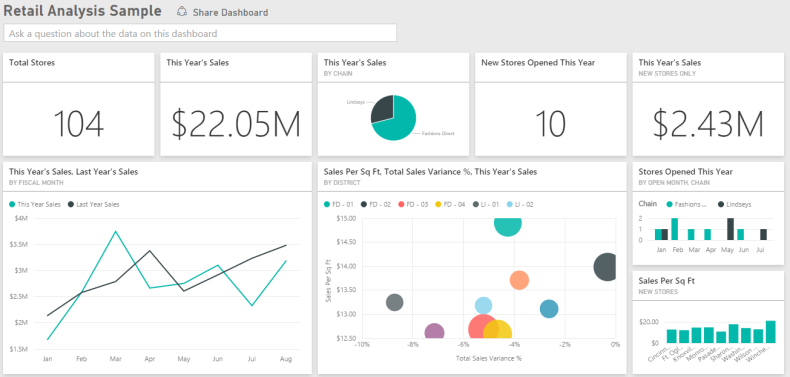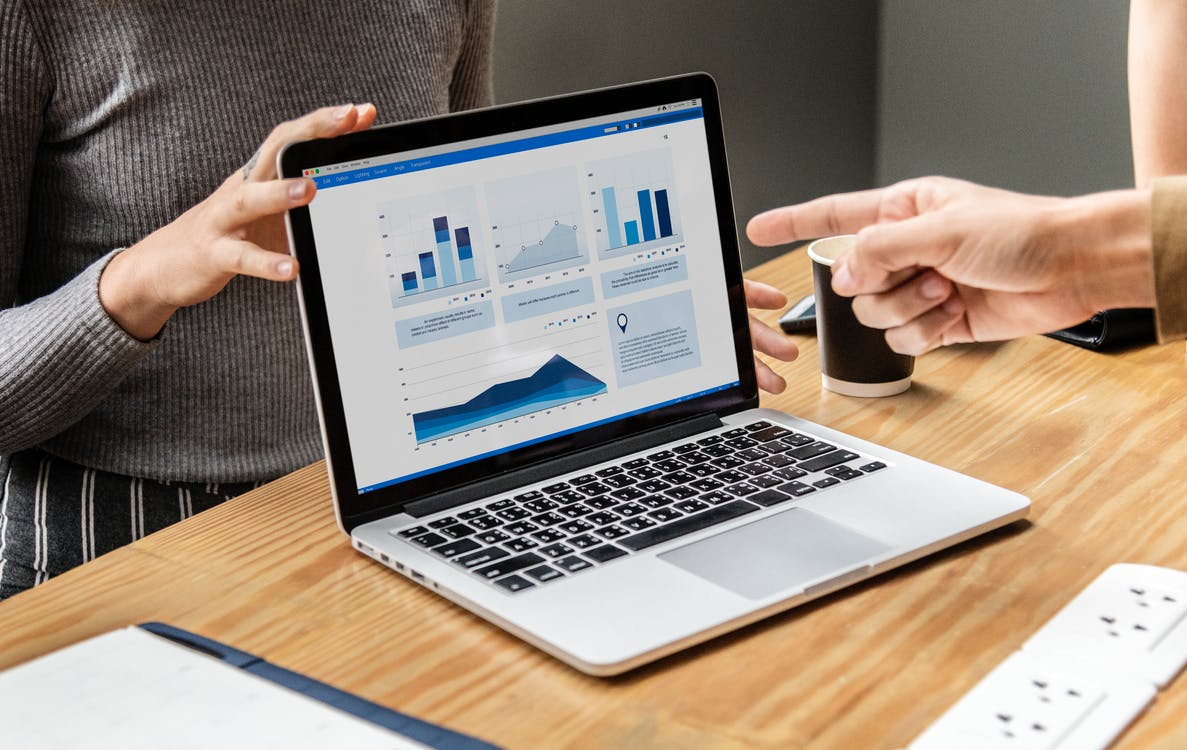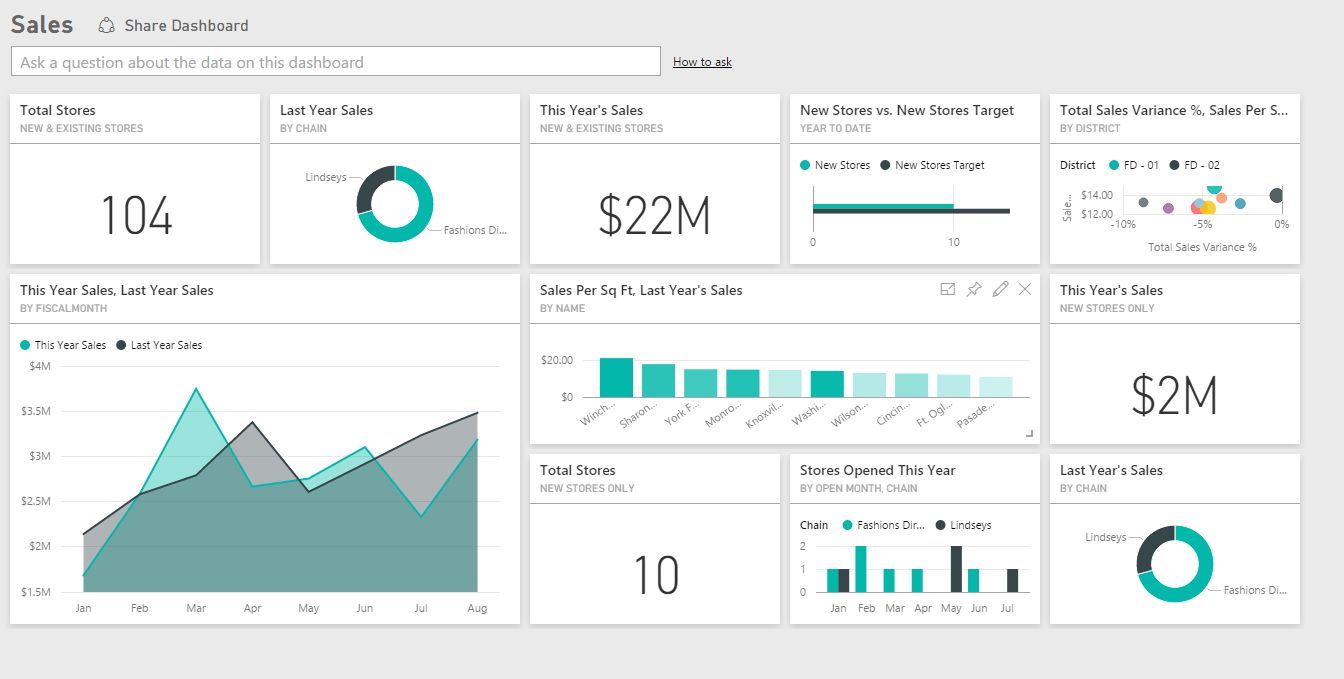Power BI is revolutionizing the e-retail sector, enabling highly sophisticated data analysis to be embedded across all aspects of business decision making. Once the preserve of IT departments and information analytics teams, platforms such as Power BI are changing the way businesses access, use and interact with the big data that is collected with every transaction, both through the supply chain and every purchase made by a customer.
Power BI: Ease of Use
The accessibility and ease of use of Power BI mean that once the system is set up and ready to use, and the data entered, that everyone in the organization can be a data analyst, and this empowers teams to make better decisions more quickly and with the ability to test and model different ideas. The strategic advantage that firms achieve through the adoption of business intelligence platforms is phenomenal.
Microsoft’s Power BI is one of the best tools for the job (which is why we use it at Loginworks Softwares!). It enables users to create and visualize complex datasets, share reports, integrate work across different teams and departments, and test out different types of analysis. Not only is it significantly beneficial for companies to be able to carry out this level of analysis, but it also ensures that all that data is put to good use helping the business to achieve its objectives. The visualization of data is one of the greatest strengths of business intelligence platforms for e-retailers because these visuals help to convert multiple layers of complex data into simple to understand graphs and charts. Critical questions can be asked, and the answer provided quickly and in a format that everyone in the business can understand.
To stay ahead of the game it is important for e-retailers to keep up with future trends and this will become easier as Power BI develops – something the team at Microsoft appears committed to with regular updates and releases available online every few weeks. Over the next few months, we expect to see a number of additional services offered through Power BI and it is essential that users of the platform keep up with these new tools for data analysis. One of the great advantages of Power BI is the ability it offers for e-retailers to bring data together from a wide range of different platforms. Sales data, product databases, and supplier databases may be managed on separate systems, but the data can be brought together on a single platform. It can also be combined with more qualitative data from social analytics tools giving an added dimension to the factors that can influence the decisions made within a business using a wide range of fairly unstructured information.
We have already seen a shift to a self-service model for users of Power BI with access to the system being provided to everyone in the business, and training offered to ensure that users maximize the value of data within their teams. Because Power BI connects to other business platforms, including Microsoft Dynamics, Salesforce, and Quickbooks, firms are now able to integrate effective data analysis as a part of everyday business. This means that e-retailers can continually re-evaluate business performance and make appropriate adjustments. Additional tools also enable users to ask more questions of the data, to look at different levels of data within the hierarchy of information, and to drill down to minute detail – it is hard to conceive of a problem in a business where well-organized datasets are unable to provide an answer.
Real-Time Reports
As Power BI is also connected to real-time data collection, reports that are produced are available in real-time – no more waiting for a report from a different department or having to take into consideration what has changed since the last report was produced. Every decision in a business can be based on the things that are happening at that moment in time. Imagine how such powerful information helps e-retailers to be more agile, to stay ahead of their competitors, and to respond quickly to changing consumer behaviors!
Combined with the increasing versatility and flexibility of Power BI on mobile devices, and business presentations come to life with the most up-to-date information available. Business pitches and supply chain meetings are informed by live data which can be presented during meetings and data changed and manipulated to assess a vast range of parameters. These might include the most popular products by store, the most competitive price for products in different states, the sales volumes of competitor products, and much more. Power BI offers really powerful tools for accessing and modifying data using apps designed specifically for Windows, iOS, and Android.
Final Words
E-retailers benefit hugely from all this data as they translate the vast amount of information into day-to-day decisions around sales and revenue targets, sales funnel monitoring, budget estimation, supply chain decisions, customer opinion and consumer behavior, different trends in different locations, and information about individual consumer’s shopping habits. E-retail is better placed than most sectors to take advantage of Power BI simply because of the volume of data that the business invariably collects with every transaction.
- Business Intelligence Vs Data Analytics: What’s the Difference? - December 10, 2020
- Effective Ways Data Analytics Helps Improve Business Growth - July 28, 2020
- How the Automotive Industry is Benefitting From Web Scraping - July 23, 2020





1 thought on “How E-retailers Stay On Top Of The Game Using Power BI”